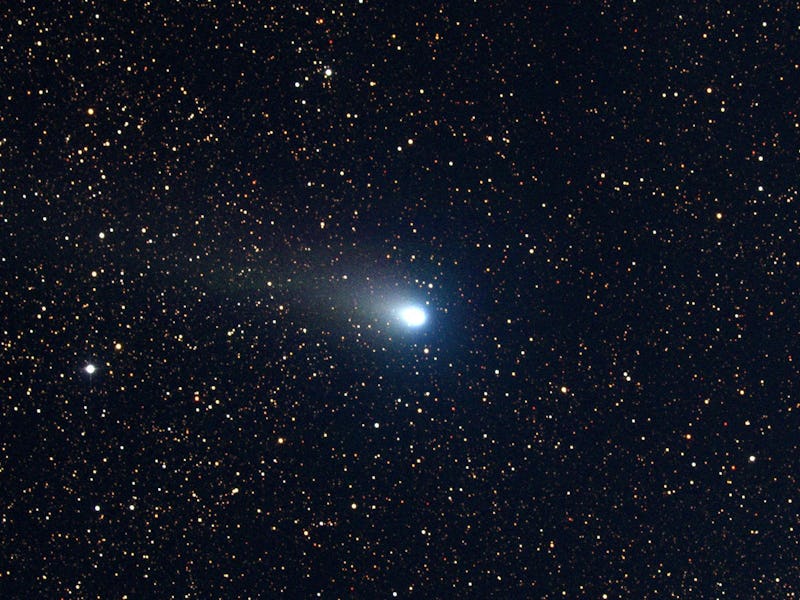Tonight's the Best Night to See the Draconids Meteor Shower
Look northwest just after sunset and get out of the city for the best views.

Thanks to a comet called 21P/Giacobini-Zinner, everyone in the northern hemisphere will be treated to a light show Friday night. Earth will pass through part of the comet’s tail of debris October 6 to 10, causing the annual Draconids meteor shower that will reach its peak tonight, October 7.
The meteors will radiate from the constellation Draco (hence the name) in the northwestern sky for the northern hemisphere. For the southern hemisphere, the radiant point may not rise above the horizon for lower latitudes, so there’s only a slight chance of spotting meteors.
For the best view of the meteor shower, you’ll need to get away from city lights. Dark Site Finder has a helpful map for finding dark skies (good luck if you’re in the Eastern United States). If you can’t make it out of the city to the pitch black of wilderness, you can still get a decent view by heading to a park or a rooftop. Bring a blanket and get comfortable.
The best time to catch the Draconids is usually in the evening, right after the sky gets dark and when Draco is at its highest point in the sky. This year, a waxing crescent moon will brighten the southwestern sky, but it shouldn’t add much more light than the usual light pollution. If the moon happens to be too bright, there should still be some action after it sets, around 11 p.m., depending on your location.
This year’s Draconids definitely won’t be on the same level as the showers in 1933 and 1946, or even 2011, when meteors fell across the sky at a rate of thousands per hour. Most years just 10 to 20 meteors streak across the sky in an hour. It’s no Perseids meteor shower, but this video from last year’s event is a nice preview of what tonight might be like:
If clouds are blocking your view, or you can’t escape city lights, you can always check out Slooh’s live stream starting at 8 p.m. Eastern.
Don’t worry, this won’t be your last chance to catch a meteor shower this year. The Orionids meteor shower will be peaking later this month, and the Geminids are sure to be a great show in early December.